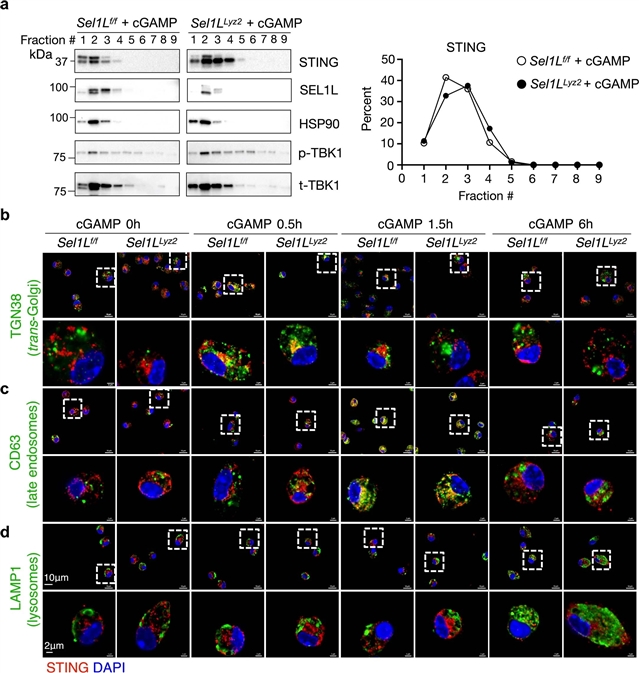
美国密歇根大学医学院齐岭研究组发现,SEL1L-HRD1内质网(ER)相关降解通过限制可激活的STING池的大小来控制STING介导的先天免疫。该项研究成果发表在2023年5月4日出版的《自然—细胞生物学》上。
他们报道SEL1L-HRD1蛋白复合物——ER相关降解(ERAD)最保守的分支——是干扰素基因刺激因子(STING)先天免疫的负调控因子,通过泛素化和靶向新生的STING蛋白在基础状态下进行蛋白酶体降解。巨噬细胞中SEL1L或HRD1缺陷特异性地放大STING信号和免疫,以抵抗病毒感染和肿瘤生长。
从机制上讲,新生的STING蛋白是基础状态下SEL1L-HRD1的真正底物,不受内质网胁迫或其传感器肌醇要求酶1α的耦合。因此,他们的研究不仅确定了SEL1L-HRD1 ERAD通过限制可激活的STING库的大小在先天免疫中的关键作用,而且确定了针对STING的调节机制和治疗方法。
据介绍,STING在响应胞质双链DNA时协调促炎细胞因子的产生;然而,ER新生STING蛋白折叠和成熟的病理生理意义和分子机制尚不清楚。
附:英文原文
Title: SEL1L–HRD1 endoplasmic reticulum-associated degradation controls STING-mediated innate immunity by limiting the size of the activable STING pool
Author: Ji, Yewei, Luo, Yuan, Wu, Yating, Sun, Yao, Zhao, Lianfeng, Xue, Zhen, Sun, Mengqi, Wei, Xiaoqiong, He, Zinan, Wu, Shuangcheng Alivia, Lin, Liangguang Leo, Lu, You, Chang, Lei, Chen, Fei, Chen, Siyu, Qian, Wei, Xu, Xiaoxi, Chen, Shengnuo, Pan, Dongli, Zhou, Zhangsen, Xia, Sheng, Hu, Chih-Chi Andrew, Liang, Tingbo, Qi, Ling
Issue&Volume: 2023-05-04
Abstract: Stimulator of interferon genes (STING) orchestrates the production of proinflammatory cytokines in response to cytosolic double-stranded DNA; however, the pathophysiological significance and molecular mechanism underlying the folding and maturation of nascent STING protein at the endoplasmic reticulum (ER) remain unknown. Here we report that the SEL1L–HRD1 protein complex—the most conserved branch of ER-associated degradation (ERAD)—is a negative regulator of the STING innate immunity by ubiquitinating and targeting nascent STING protein for proteasomal degradation in the basal state. SEL1L or HRD1 deficiency in macrophages specifically amplifies STING signalling and immunity against viral infection and tumour growth. Mechanistically, nascent STING protein is a bona fide substrate of SEL1L–HRD1 in the basal state, uncoupled from ER stress or its sensor inositol-requiring enzyme 1α. Hence, our study not only establishes a key role of SEL1L–HRD1 ERAD in innate immunity by limiting the size of the activable STING pool, but identifies a regulatory mechanism and therapeutic approach to targeting STING.
DOI: 10.1038/s41556-023-01138-4
Source: https://www.nature.com/articles/s41556-023-01138-4
Nature Cell Biology:《自然—细胞生物学》,创刊于1999年。隶属于施普林格·自然出版集团,最新IF:28.213
官方网址:https://www.nature.com/ncb/
投稿链接:https://mts-ncb.nature.com/cgi-bin/main.plex
